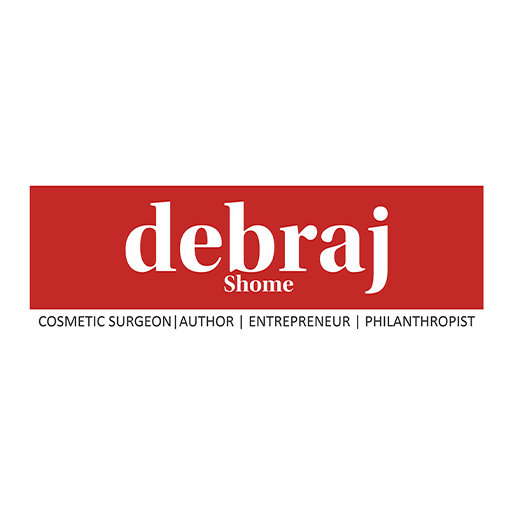Rhinoplasty, or the nose job, is the simplest and most common way of gaining confidence and satisfaction with your appearance. Rhinoplasty can get rid of the snoring issues, alter the shape and size of your nose, and do much more to enhance the rest of the facial features. Expert rhinoplasty and plastic surgeons use two main techniques for nose surgery: closed and open rhinoplasty. Each has its own advantages and disadvantages, and the selection depends on the type of procedure and the amount of work that needs to be done.
Closed rhinoplasty is a modern rhinoplasty. It is a surgical procedure done under general anesthesia. It is mostly scarless because smaller incisions are made inside the nose through the nostrils. There is one opening inside each nostril. The surgeon has limited visibility of the insides of the nose in this procedure, which is usually not done to make very major changes in the shape and structure of the nose. Closed rhinoplasty is mainly used for primary noses, i.e., for those patients who have not had a previous rhinoplasty in the past.
Advantages of closed rhinoplasty
- This type of nose job does not alter the natural characteristics of the nose and simply refines or enhances the anatomy.
- This procedure does not leave behind any telltale signs of surgery. It is perfect for those who do not want an overall ‘I got a nose job done’ look and don’t want their family and friends to know they have undergone a procedure.
- It is also known as scarless rhinoplasty. Since the incisions are inside the nose, the risk of permanent scarring is minimal.
- Shorter time in the OT. In open rhinoplasty, nasal reconstruction such as draping the skin, positioning the tissues, etc. takes a lot of time, whereas in closed rhinoplasty, it can be done in a shorter time because there is no need for nose reconstruction.
- There is less swelling, numbness, etc. because the procedure does not disturb the natural drainage channels of the skin.
- Quicker and easier recovery time. Closed rhinoplasty has a shorter recovery period, and most patients can go back to normal life in about a week after the surgery. There are no signs of surgery on the outside.
Closed rhinoplasty has changed manyfold in the last few years. It has become more technical and even more philosophical to ensure the best and most consistent results for all ethnic and cultural backgrounds. In the past, rhinoplasty largely relied on the reduction-only approach, but today, with closed rhinoplasty, the approach is more proportional and the reduction is kept to a minimum. The variability makes closed rhinoplasty one of the most complex surgical procedures in plastic surgery. Nasal proportions are directly linked to facial beauty. The anatomical variations of the inner structures and the different tissue thicknesses make it impossible to have the same nose for every patient or define one perfect nose. Hence, even experienced surgeons sometimes struggle to give consistent results in constructing the ideal nose.
The key to a good nose job lies in the correct selection of patients, a thorough preoperative test, and planning with the patient to align the goals. This also prevents the change of secondary procedures.
Closed Rhinoplasty Technique
- The patient is made to lie in a supine position (face up), and anesthesia is given to numb the nasal region and prevent bleeding. The short, thick hair at the entrance of the nose is shaved, and the nasal mucosa is lined with a povidone-iodine solution. The face is cleaned and prepped for surgery, and if auricular cartilage harvesting is planned, then the rhinoplasty surgical team will also prep the grafting area.
- Incisions are the next step. Once the surgeon has marked the area that is to be operated on, they will make small incisions inside the nose. The surgeon is able to visualize the changes made to through the incisions and make the necessary corrections. The site and angle of incisions depend on the type of modification done.
- For reduction of the bony dorsum, the surgeon will smoothen the bone to make it even and straight. In the case of cartilaginous dorsum, trimming with scissors or a scalpel works very well. The incisions are then closed, and in some cases, a cast or splint may be placed on the nose to stabilize the structure.
Closed rhinoplasty is also successfully used for augmentation of the dorsum using autologous tissue grafting and even synthetic implants. Tip modifications using closed rhinoplasty are done by righting the unflattering nose angle, correcting tip projection, and performing tip rotation. Turbinectomy is another important nose surgery done through closed rhinoplasty to correct the nasal airway obstruction.
Who Can Get A Closed Rhinoplasty?
Rhinoplasty is generally done for patients who are of age 15 and up, and the facial growth is completed, i.e., the facial skeleton has matured enough to handle cosmetic changes. The patients should be healthy and free from any medical conditions.
The patient should be looking to correct the nasal defects in the airway, shape, or size of the nose, have realistic expectations of the surgery, and be willing to undergo the full recovery process.
Preparing For Closed Rhinoplasty
To ensure a good recovery and long-lasting results from closed rhinoplasty, it is essential for you to follow the pre- and post-care instructions carefully. For the preparation of closed rhinoplasty
- Stay away from unprescribed medications in OTC and non-prescription medications about two weeks before the procedure.
- Avoid smoking, as it can dilate the blood vessels and even cause excessive bleeding.
- Limit alcohol consumption.
- Stay away from prolonged sun exposure and always wear sunscreen with 30 SPF and above.
- A few hours before the surgery, avoid eating or drinking.
When you have doubts, contact your surgeon regarding getting ready for the surgery.
Post-surgery recovery
For Proper Healing After The Scarless Rhinoplasty Surgery:
- Don’t drive after the surgery; arrange for somebody to drive you home. You will need somebody to stay with you for about one day after the procedure.
- Don’t blow your nose or sniff hard. Some congestion in the nose is normal, and you can try to remove gently or spit it out, but do not try to clean the insides of the nose by yourself. If sneezing is inevitable, then sneeze with an open mouth to reduce disturbances in the nose.
- Eat a soft and balanced diet such as cool drinks, and bland foods like plain crackers, vegetable porridge, soup, oatmeal, mashed potatoes, smoothies, etc. to prevent any pressure on the nose.
- Avoid strenuous activities like jumping, heavy lifting, heavy weights, and all kinds of contact sports for about six weeks after the closed rhinoplasty surgery. This gives the time to heal properly.
- Take the medications on time, as it helps with pain management and safe recovery.
- If you have a cast or splint, then keep it clean and dry. Keep the stitches clean and don’t rub on them.
- Sleep on your back with the head elevated. Sleeping on the back keeps the swelling down and prevents pressure on the nose. Sleeping with your head elevated also does the same.
- Switch your toothbrush to one with soft bristles. This will prevent excessive pressure on the upper lip and keep the nose stable.
Closed Rhinoplasty Costs
The cost of a closed rhinoplasty can vary significantly depending on various factors, including the surgeon’s experience, geographic location, the complexity of the procedure, the facility where the surgery is performed, and additional fees.
Essentially, the cost of closed rhinoplasty typically includes several components, such as:
Surgeon’s Fee: This fee reflects the surgeon’s expertise and experience. Surgeons with more extensive experience often charge higher fees.
Anesthesia Fee: Anesthesia is administered during the surgery for your comfort and safety. The cost of anesthesia varies.
Facility Fee: The fee for using the surgical facility or hospital where the procedure takes place.
Medical Tests and Preoperative Expenses: These may include medical assessments, laboratory tests, and any preoperative preparations.
Postoperative Care: This covers follow-up appointments, wound care, and any necessary adjustments.
Surgical Supplies: Costs related to surgical instruments and supplies used during the procedure.
Prescription Medications: Expenses for medications prescribed after surgery to manage pain and prevent infection.
Miscellaneous Fees: Depending on your specific case, there may be additional fees for special circumstances or services.
To determine the exact cost of your closed rhinoplasty, it’s essential to schedule a consultation with a board-certified plastic surgeon or an experienced facial plastic surgeon. During this consultation, the surgeon will evaluate your individual needs, discuss your goals, and provide you with a personalized quote.
Many practices offer payment plans or financing options to make rhinoplasty more accessible to patients. Keep in mind that the cost can also vary significantly between different regions and countries, so it’s advisable to consult with local surgeons for specific pricing information.

